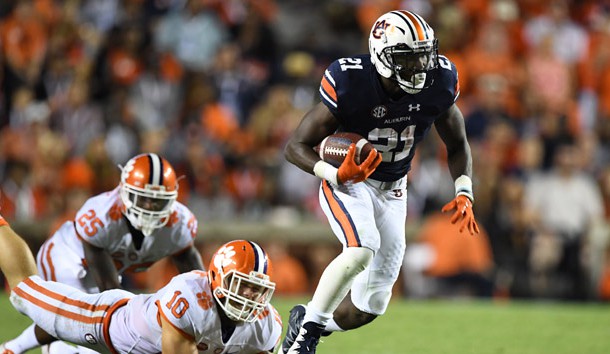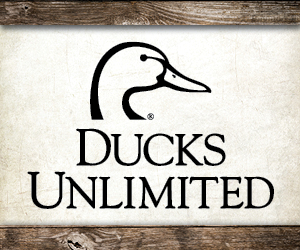
Kerryon Johnson was one bright spot for Auburn. Photo Credit: John David Mercer-USA TODAY Sports
In early October, 1968 when Auburn played Clemson in Death Valley, I was in the press box covering that game. (Yes, I am that old and have been doing this that long!)
Back then, the end zones there weren’t closed in, so from a high vantage point you could see the Clemson players outside Memorial Stadium, preparing to run down the hill onto the field. A couple of years earlier, players had started “rubbing the rock,” the tradition of running down to the field after rubbing a rock that had been given to head coach Frank Howard by a longtime friend who had graduated from Clemson almost 50 years earlier.
Auburn won that game, as it has most in the series. With Clemson’s win in Jordan-Hare Stadium on Saturday night, Clemson has won 14 of the 50 games played between the two teams. Auburn has pitched shutouts in 20 of those games.
But, in recent years, the games have been close and have been significant, especially when evaluating how Auburn seasons developed after the match-ups.
In 2010, an Auburn team which was unheralded in preseason polls, won by just a field goal in overtime in September, the third of 14 consecutive wins on the way to the BCS national championship.
In 2012, an Auburn team which was unheralded in preseason polls, lost by a just touchdown in September, the first of nine losses which brought about the firing of Gene Chizik and the staff which had won the national title two seasons earlier. That staff included current Tiger head coach Gus Malzahn.
On Saturday night (starting at a time too late for a college football kickoff) another unheralded Auburn team, lost by just six points to Clemson, the nation’s No. 2 team led by possible Heisman Trophy winning quarterback Deshaun Watson.
So, what should be expected next from this Auburn team?
Could the improved play after intermission, the no-quit approach that won the second half, jump start the Tigers? That happened in Baton Rouge in 2013 when Auburn got behind early to LSU, made a second half comeback but still lost by 14 points, but didn’t lose again on the way to its second national championship game in four years.
Or could the slow start, the self-inflicted penalties and turnovers, the poor first half play calls and inexplicable quarterback substitutions, be a sign of things to come. It was similar in 2012 when Auburn followed the close Clemson loss with no SEC victories and only three wins overall. With games ahead this season in Oxford, Athens and Tuscaloosa, and with visits from Texas A&M and LSU, a season with 6-7 losses is not out of the question unless all of the things listed above are quickly eliminated.
Even to the untrained eye, there was a lot of bad from Saturday night, many things to question.
Lump play-calling and execution into the same pile. In the first half, both were atrocious. The running game was ineffective, as the offensive line, which should be a team strength, was overwhelmed by Clemson’s defenders, stuffing the running lanes. Passes were batted down, quarterbacks were hurried, and the anemic rushing yardage amount was almost totally eliminated by multiple sacks of immobile Jeremy Johnson, who didn’t show that he could avoid a rush or make short yardage runs when needed near the goal.
Then, there was the merry-go-round comedy of quarterback musical chairs which left people in the press box, in Jordan-Hare stands and in millions of football fan homes around the country scratching their heads.
Why start one quarterback and only let him play two series? Why change quarterbacks in the red zone and take out the quarterback that got you there? Why continue to call plays for quarterbacks which haven’t worked over and over again? Is it not still important to develop quarterback/offensive consistency? If the goal was to confuse the Clemson defense, that didn’t work, but it certainly worked to confuse everybody else.
And the unforced errors. The pass interference call that set up a Clemson touchdown. The pass that was ruled incomplete at the Clemson one-yard line, which could have set up a touchdown. The block in the back on the kickoff return to start the second half, taking away the start near midfield, moving the ball back to only five yards from the goal. The pass interception near the Clemson goal line. And there were others. How many of those can you commit and still expect to defeat one of the nation’s best teams?
But, there was some good. Auburn’s critics, including many who claim to be Tiger fans, may be unwilling to acknowledge it, but it was there. Everything wasn’t bad.
The defense played well from start to finish. On the other side of the ball, the Tigers never found an offensive identity, but in the second half they did at least find some offense, outgaining and outscoring Clemson after the break.
In the first half, Clemson had 233 yards to only 38 for Auburn. Despite getting no help from Auburn’s offense, the score was only 10-3 at intermission.
In the second half, Auburn held Clemson to about 160 yards. The 19 points scored by the visitors was their lowest point total in the last 19 games, 18.5 points under their 2015 per game average and 21 points fewer than scored against Alabama in last year’s national championship game. Their 399 total yards were 115 yards fewer than the 2015 per game average and 156 yards less than against Alabama.
The kicking game continues to be among the nation’s best. Placekicker Daniel Carlson kicked field goals of 53 and 32 yards. He has been successful on six of seven career kicks over 50 yards. Kevin Phillips averaged over 44 yards on five punts, including a 68-yarder. And, there was that long kickoff return.
While the unexplainable, damaging offensive decisions and problems continued throughout the game, Auburn’s play did improve significantly in the third and fourth quarters. The Tiger offense had a chance to win it, throwing into the end zone on the final two plays.
Most importantly, Auburn players didn’t give up. The second half was gutsy, never-say-die, looking like Tiger players genuinely thought they could win up until the final ticks on the clock.
So, what should Auburn fans expect? They will likely know by the end of September how things will go the rest of the season. If offensive execution isn’t better, play calling doesn’t improve, quarterback uncertainty isn’t eliminated, and critical mistakes aren’t drastically decreased, Texas A&M and LSU will come to Jordan-Hare understandably expecting to win … and they probably will.
But, on Saturday, A&M and LSU both showed that they are beatable teams. Auburn showed the potential to win both games.
Will this season play out like 2010 and 2013, or more like 2012?
Only Auburn coaches and players can provide that answer in the next few weeks.


